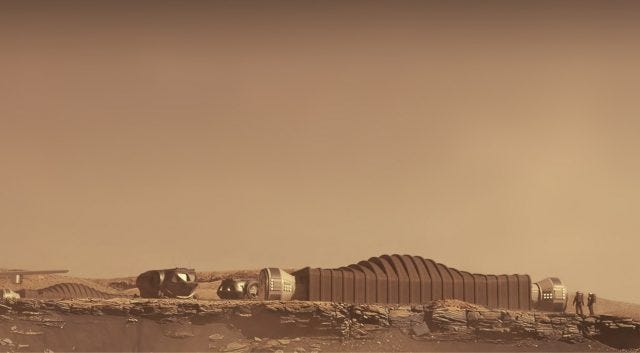NASA Invites Candidates for Year-Long Mars Simulation Program
Written on
Chapter 1: Introduction to the CHAPEA Program
NASA is embarking on a significant initiative to develop the necessary technologies for human exploration of Mars. However, the success of these advanced spacecraft and manufacturing techniques hinges on the ability to keep astronauts safe and effective in a Martian environment. To address this challenge, NASA is organizing a series of year-long Mars simulation missions, inviting applicants who meet specific selection criteria. Successful candidates will spend an entire year in a simulated Mars habitat alongside three other participants.
Section 1.1: Overview of the CHAPEA Initiative
The program, known as CHAPEA (Crew Health and Performance Exploration Analog), will be hosted at the Johnson Space Center in Texas. While the facility is located in the southern United States, participants will live and work under conditions that mimic those on Mars. The habitat, named Mars Dune Alpha, is a closed environment spanning approximately 1,700 square feet, comparable to a modest-sized house in the U.S.

The primary objective is to assess how individuals adapt to the challenges associated with a Mars surface mission. To achieve this, NASA is committed to creating a realistic experience. Once the mission begins, no one will be allowed to enter or exit the habitat for the entire year, which is set to commence in the fall of 2022. Additionally, participants will face various stressors, including limited resources, equipment malfunctions, and communication delays akin to those expected on Mars. They will engage in scientific research, perform simulated spacewalks through virtual reality, and operate robotic controls, while subsisting solely on astronaut-approved food for the duration.
Section 1.2: Participant Requirements
NASA is searching for volunteers with a scientific background at the master’s degree level, with expertise in fields such as engineering, mathematics, biology, physics, or computer science. Experience in piloting aircraft may also be considered a valuable asset. Interested individuals, aged between 30 and 55, can apply through the NASA website. However, it is important to note that certain medical conditions may disqualify applicants, including food allergies and the need for dietary supplements.
Chapter 2: Screening and Selection Process
In this video, NASA volunteers complete a yearlong Mars simulation, providing insight into the challenges and experiences faced during the mission.
NASA will conduct thorough medical and psychological evaluations to ensure that candidates are fit for the program. Given the anticipated high number of applicants, the agency is likely to have a wide pool from which to select the final four participants. If you’re interested in being considered, make sure to submit your application by September 17, 2021.
This video features the crew of NASA's simulated Mars habitat emerging after a year, showcasing their experiences and insights from the mission.
For further reading, check out related topics:
- Ingenuity Mars Helicopter Completes Ninth and Toughest Flight
- China Successfully Lands on Mars, Preps Rover for Deployment
- NASA’s InSight Lander Detects Major Marsquakes